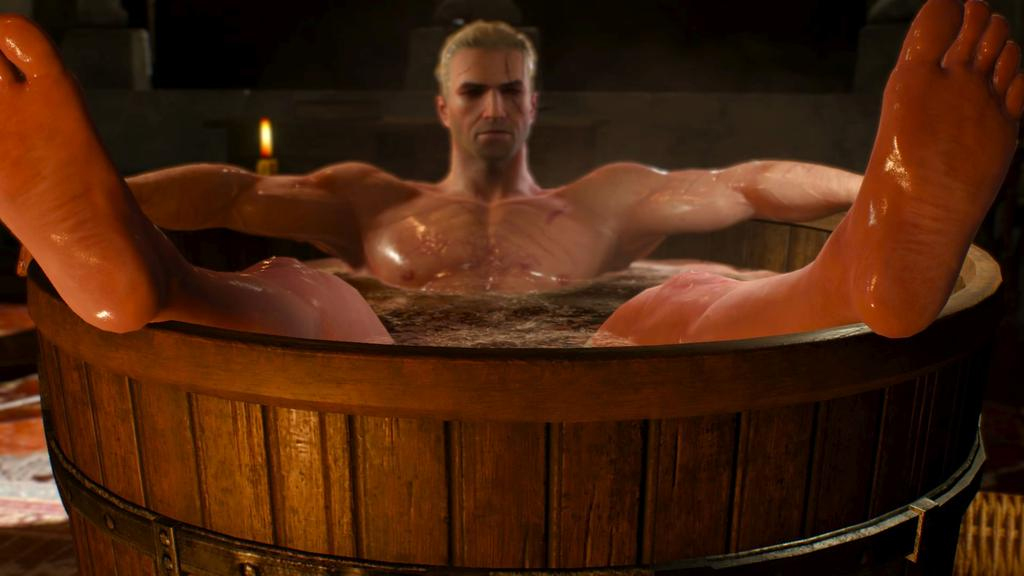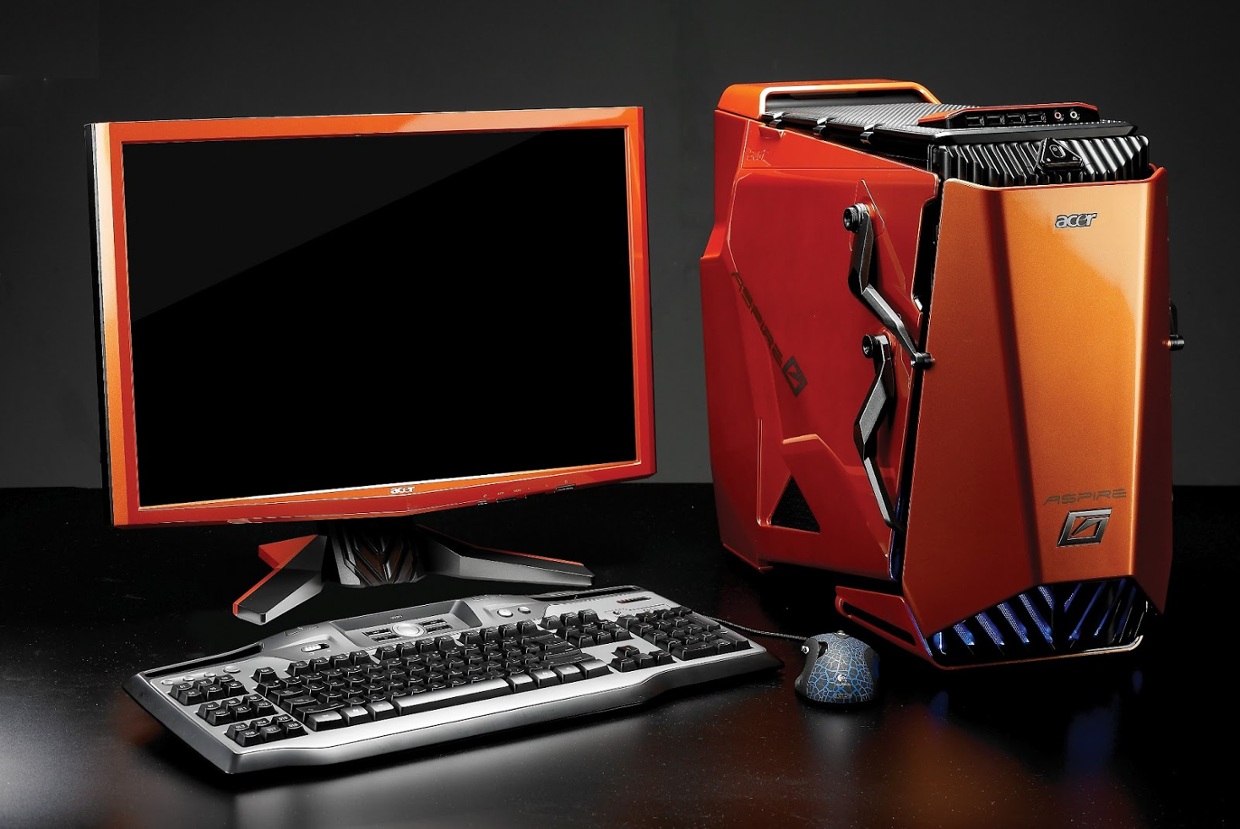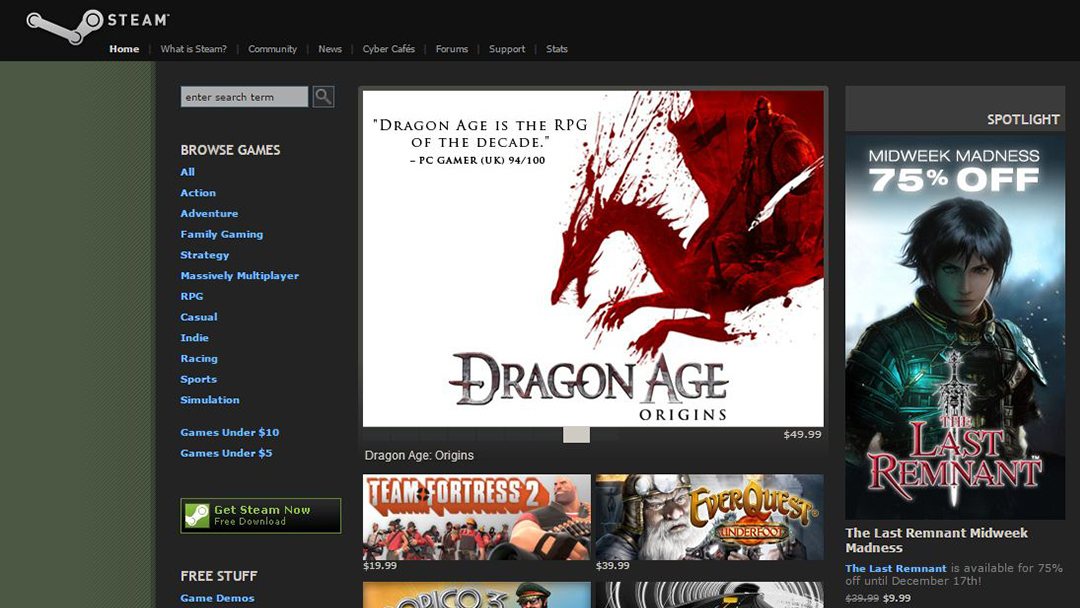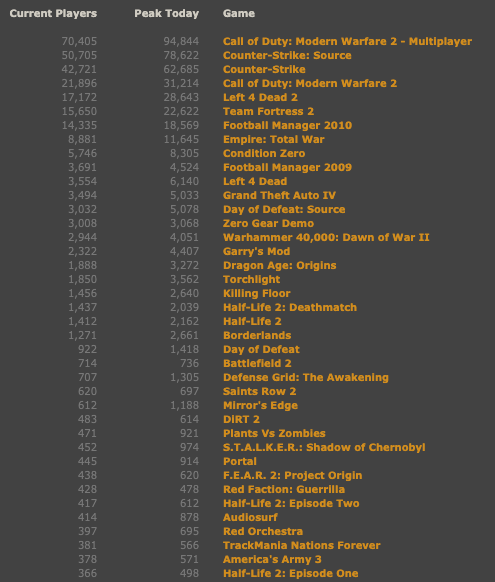What PC gaming was like in 2009
Before we move into the next decade in PC gaming, let's take a trip back in time.
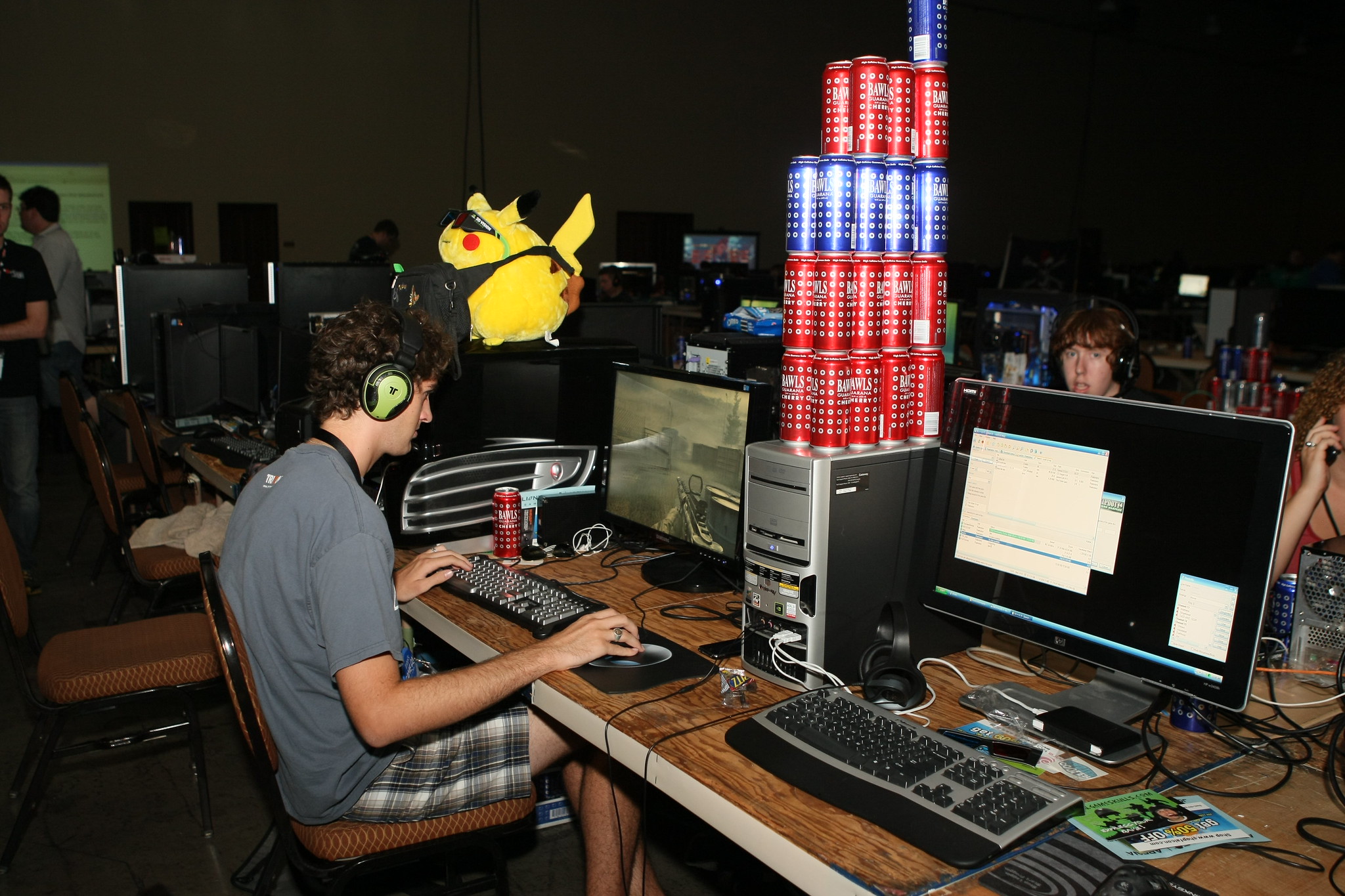
There's too much time in 10 years. In that time, we've started families, gone to school, traveled, loved, lost, replaced GPUs—all that human experience bundled up in a tidy, arbitrary package: decades. And for PC gaming, an artform and industry that doesn't quit, it sure feels like a lot more than a decade fits into a decade.
To reflect on this move into 2020 and a new era of PC gaming—a time that will surely be full of formless monstrosities and microtransactions, wonders beyond our wildest dreams and budgets—let's look back at where we were 10 years ago.
Join us as we go full David Attenborough and observe the PC gamer of 2009 and the state of our favorite hobby way back when. We'll move through the state of hardware, the price of PC gaming, how we played, what we played, and the big questions we were asking about our biggest problems at the time.
I can't believe I had to do extensive research about something I lived 10 years ago. Time, man.
What was considered a high-end PC around 2009?
If you were looking for something to best Crysis, the benchmark for PC gaming graphics from 2007 through a chunk of the 2010s, you'd really have to splurge in 2009. Below are a few extremely high-end PCs from the era as gathered by Tom's Hardware, now PC Gamer's sibling site.
Acer Predator prebuilt 2009:
- CPU: 3.0 GHz Intel Core 2 Quad Q9650
- GPU: 2 Nvidia GeForce 9800 GTXs in SLI mode (remember SLI?)
- RAM: 4GB
- HDDs: 2 300GB 10,000 RPM HDDs, 2 640GB
- Optical drive: Blu-ray drive
- Price: $2700
Xfinity prebuilt 2009:
Keep up to date with the most important stories and the best deals, as picked by the PC Gamer team.
- CPU: 3.0 GHz Intel QX9850 Quad Core Extreme
- PSU: 1000W
- RAM: 4GB DDR2
- 150GB Raptor HDD
- GPU: 2 Radeon HD 2870s in Crossfire mode
- Price: $5700
These prebuilt luxury machines were SLI or Crossfire capable beasts with ridiculous chassis and dumb names and now-laughable specs—it's like everything's changed even though nothing has. We used to really worry about RPM, and those 10,000 RPM drives weren't cheap (or very spacious). SSDs were fairly new on the scene, too, at least for the PC gaming market, and they were extremely expensive. A modest SSD in either machine above would juice the price by $300-$500.
But what was an average enthusiast buying in 2009? Most of us just wanted a capable, somewhat future-proof PC, not some state-of-the-art novelty I could build for much cheaper in a year or two. Anandtech's 2009 PC buying guide had a more reasonable spec in mind.
Anandtech's performance mid-range 2009:
- CPU: Intel i7 920
- GPU: Sapphire Radeon HD 4890
- RAM: 6GB DDR3
- HDD: 1TB 7200 RPM
- Optical Drive: Blu-ray or HD DVD
- Case: Thermaltake Spedo Black Full Tower
- PSU: 700W modular
- Price: $1250
What was the best graphics card in 2009?
The dream was to own either an ATI Radeon HD 5970 or an Nvidia GeForce GTX 295 (or HD 5870 / GTX 285 if you didn't want the dual-GPU variants), specced out like so.
ATI Radeon HD 5970 specs:
- GPU Clock: 725 MHz
- Memory Clock: 1000 MHz
- Memory: 2GB DDR5
Nvidia GeForce GTX 295 specs:
- GPU Clock: 576 MHz
- Shader Clock: 1242 MHz
- Memory Clock: 999 MHz
- Memory: 896MB DDR3
Best CPU?
Intel's Core i7-965 Extreme was widely considered one of the best CPUs of the era. Here's what the sucker was packing. Compare it to your own CPU and laugh! I hope you laugh. Please, stop crying.
Intel Core i7-965 Extreme specs:
- Cores: Quad-Core
- Socket: LGA1366
- Clock Speed: 3.2 GHz
- Max Turbo Speed: 3.46 GHz
- Threads: 8
- Cache: 8MB
What was the most common monitor resolution?
Tom's recommended a quite a few 1920x1200 monitors (ah, the slightly-squarer luxury of 16:10), though it was more common to play on lower resolutions. A study by Teoalida claims that 1280x800 monitors made up the majority of the worldwide market share in 2009, with 16:9 resolutions as reigning res champs—my own monitor was a 1440x900 screen that I'd used for years at that point, so I feel it.
The new decade marked the early days of the 1920x1080 standard, established by the TV industry's adoption of the 16:9 aspect ratio and ensuing HDTV resolutions, 720p and 1080p. The reigning popularity of console games used HDTV-capable resolutions as a big selling point, so most games were designed to hit the same benchmarks.
What new hardware had just arrived or was on the horizon?
I bought an SSD around 2012 and still remember the boot time blowing my ass off.
SSDs weren't a new technology, but were just starting to break through into vaguely affordable territory, with a 256GB drive going for around $200 and 500GB for $400. The big ticket price was worth it for longtime builders, though, with boot and game loading speeds seeing a huge jump. I bought an SSD around 2012 and still remember the boot time blowing my ass off. They quickly became one of the most vital PC upgrades. Now we can nab 1TB SSDs for around $100. Time's arrow.
There was also that short Blu-ray vs HD-DVD war (2006-2008; never forget), which Blu-ray ran away with. I still think about all those destitute HD-DVD copies of Planet Earth sitting around somewhere, probably in pits polluting the earth. The winner didn't matter much to PC gamers though, since disc drives shortly became unnecessary. Digital distribution for all types of media, better internet, and cheaper and faster storage left disc drives to the seriously stubborn, though with strict data caps from some ISPs and the saturation and acceptance of online-authentication DRM via launchers, I don't blame anyone for holding on tight.
What did our PCs look like?
As all old tech does: like garbage! The best chassis were simple black boxes, though the chunky Gamer Aesthetic was still doing its thing, adding angles and curves and garish colors where they didn't belong. LED lighting was a bit more of a luxury, though simpler mono-color lights were fairly common, especially around case buttons. Nothing from 2009 was much more offensive than the gross cases you see around these days, though things were a bit more ubiquitously obelisk adjacent. Dust was created to collect on these suckers.
Here's a look at a few cases from back when.
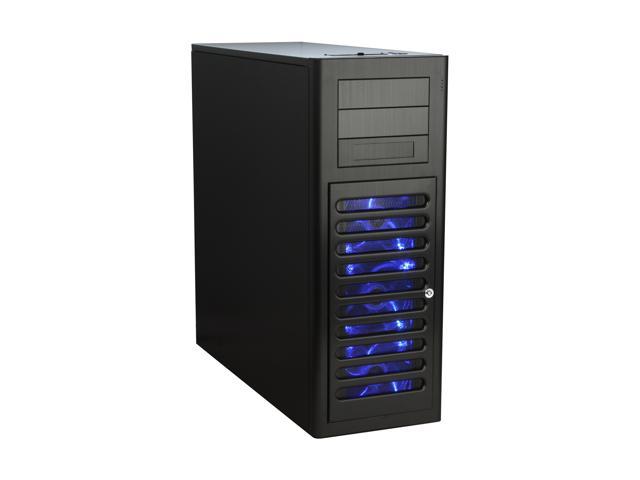
ABS Tigas
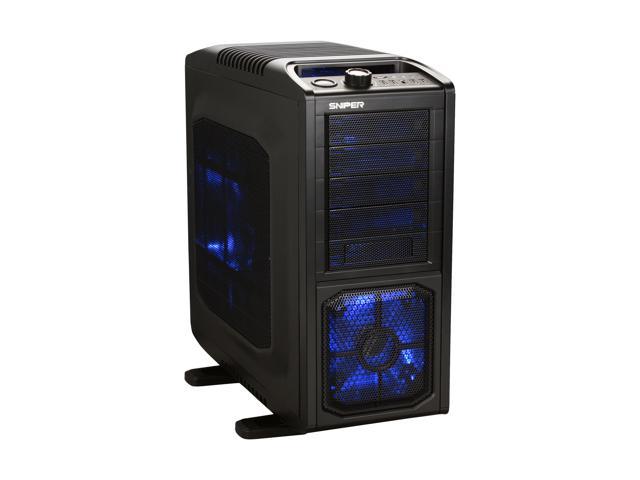
Cooler Master Storm Sniper
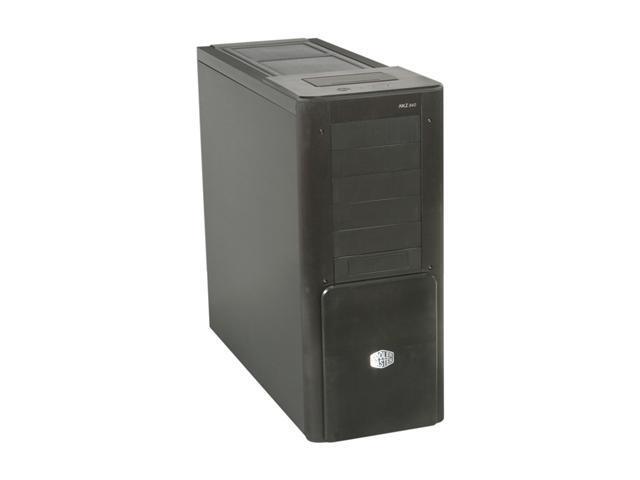
Cooler Master ATCS 840
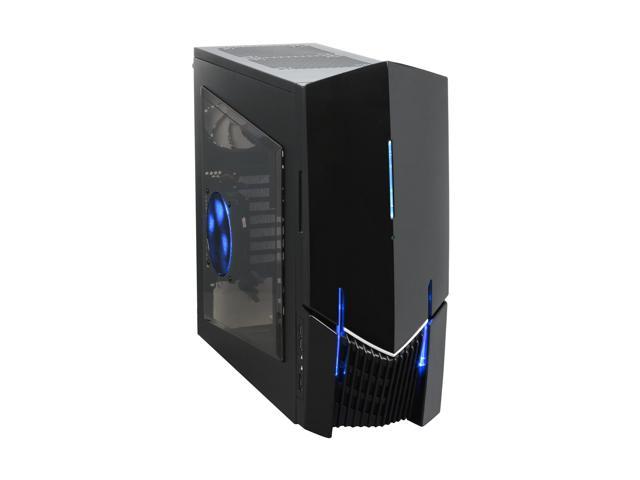
NZXT Lexa
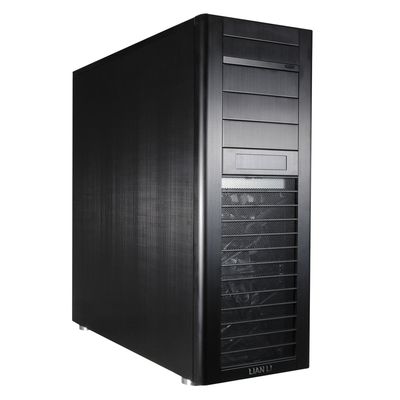
Lian Li B70
Where did people buy games?
At stores—how quaint—but not as often. According to an NPD report, "Retail sales in the PC game software industry also experienced declines, with revenues down 23 percent, generating $538 million in 2009."
I'll never forget when Half-Life went on sale for $0.98 in 2008.
After the release of The Orange Box in '07, Steam was my primary destination, and it was becoming the place to buy games for more PC gamers year after year. Why? Sales, baby.
Steam Sales were a different beast back then. Games didn't just get steady, flat discounts. Limited-time sales reduced games by up to 90-percent. I'll never forget when Half-Life went on sale for $0.98 in 2008. Games were still retailing for $60 in stores and retailers couldn't afford to discount games so readily. Steam sales were a revelation for kids like me, who had next to nothing to spare on games. Although folks like Stardock tried, no other company had the infrastructure, library, renown, and wild pricing to take Steam on, and so it became embedded into PC gaming culture in the west.
A few familiar names were picking up speed, though. CD Projekt launched GOG in 2008, then elongated as Good Old Games, selling classic PC games DRM-free and filling a preservationist niche rather than posing as a full-on competitor. And just a bit later in 2010, Humble arrived with the Humble Indie Bundle, the product of Jeff Rosen of Wolfire Games, developer of rabbit kung-fu sim Overgrowth. Cheap bundles full of great games accelerated the growth of Steam libraries and renown among participating indie devs.
How many games were there?
According to SteamSpy, 266 games came out on Steam in 2009. In 2019, Steam farted out that many games every two weeks with 7635 games released this year so far.
How big was Steam?
Tiny. Steam was itty-bitty, even if it felt huge. The peak concurrent users on Dec 26 was 2,159,861. Today, Steam often peaks around 16 million concurrent users. That's around seven times the 2009 peak.
How many launchers were there?
Steam was the big one, though Stardock (Ashes of the Singularity, Galactic Civilizations) had a go with their own launcher Impulse, which arrived in June 2007. A lack of feature parity with Steam and the sneaky insertion of Stardock's desktop organizer Fences into the Impulse installer didn't help it win over the masses. GameStop bought out and rebranded the app in 2011, shuttering it a few years later.
Battle.net 2.0, deployed in March 2009, allowed players to tie CD-keys to their accounts and download digital versions of their Blizzard games from anywhere, but the desktop client was still a few years out.
The next launcher to arrive would be Uplay's primordial form in early 2010. I'll never forget the first time a launcher launched a launcher. So, in 2009 there was roughly one major launcher. Compare that today's 11-plus.
2009 was also the era of GFWL. Games for Windows Live made our lives miserable, though it wasn't exactly a launcher, more of an arbitrary overlay and DRM hybrid that forced you into the Xbox Live ecosystem. I'll never forget the day it was patched out of Dark Souls. Praise the sun, etc.
What was the state of DRM and piracy?
Piracy was definitely a hotter topic in this period. SecuROM was pushing online authentication checks and limiting how many times we could use a CD key to install a game, which sounds like a nightmare from here. Spore required online authentication, initially limited to three total activations. Mass Effect was even worse: SecuROM required online activation every 10 days when it first launched on PC, though the three-activation limit wasn't a better solution.

Origin isn't DRM-free but I'd argue it's better than calling EA support to refund activations every few years. Account-based DRM as The Thing was inevitable, thanks to the growing popularity of Steam.
I'll admit, as a poor college student, I was totally immersed in the world of ISOs and virtual disc drives, especially those lovely no-CD fixes to bypass disc checks. Being a pirate was easy. The virus-ridden horrors of early P2P programs like Limewire and Kazaa were buried by popular torrent sites, where downloads were faster and content was cleaner (or at least easier to verify as such).
But 2009 was also the year that the founders of The Pirate Bay, one of the most popular torrent warehouses, were found guilty of assisting copyright infringement and sentenced to prison. Around then you'd read the occasional horror story about some kid getting sued for millions of bucks because he downloaded an MP3. DVDs still opened on that amazing "You Wouldn't Steal a Car" notice.
GOG actively took on the DRM and piracy trends head-on, touting its DRM-free games as a more respectable solution. Piracy is definitely still a thing and GOG is still selling DRM-free games, albeit with an emphasis on GOG Galaxy 2.0, a launcher to unite them all. Do we prefer the old problems or the new problems?
What were the most popular games?
A 2009 NPD report details the top-selling retail (ie, boxed copies) PC games of the year with The Sims 3 as the big winner. World of Warcraft was the MMO to be, Call of Duty was riding the initial Modern Warfare wave, and Dragon Age: Origins marked the beginning of a new success for BioWare.
1. The Sims 3 (Electronic Arts)
2. World of Warcraft: Wrath of the Lich King (Blizzard, Activision)
3. The Sims 2: Double Deluxe (Electronic Arts)
4. World of Warcraft Battle Chest (Blizzard, Activision)
5. Call of Duty: Modern Warfare 2 (Infinity Ward, Activision)
6. World of Warcraft (Blizzard, Activision)
7. The Sims 3: World Adventures (Electronic Arts)
8. Spore (Maxis, Electronic Arts)
9. Dragon Age: Origins (BioWare, Electronic Arts)
10. Empire: Total War (The Creative Assembly, Sega)
With Steam as the earliest source of daily gaming stats we can get a look at what people were still playing near the end of 2009, just keep in mind Steam's library and audiences weren't representative of the entire industry.
Here's a peek at the top games on Steam on December 26, 2009, as preserved by the Internet Archive.
This snapshot certainly sends the message that multiplayer first-person shooters were still super popular. A couple strategy games, GTA 4, and the eternal, undying Football Manager added some color. Audiosurf, Torchlight, and Killing Floor stand out as prominent indies.
Today's Steam charts don't look terribly different except for a massive growth in players across all games and genres, with some good diversity and new genres peppered in: car soccer, survival games, MOBAs, farming sims, and a bit of battle royale.
What games were critically acclaimed?
Most accolades went to big budget projects from established studios and series. This run of Metacritic's highest-rated PC games for 2009 would be the middle of the pack in recent years, with a few exceptions.
Batman: Arkham Asylum - PCG Score: 93
Dragon Age: Origins - PCG Score: 94 ( so just as good as DA2)
Left 4 Dead 2 - PCG Score: 92
Braid (Late PC release) - PCG Score: 92
Plants Vs Zombies - PCG Score: 90
The PC has always been the best place for indie games, but it wasn't until the last decade that we saw those games catch fire in a big way. Steam and XBLA brought smaller developers to a bigger stage, giving cerebral side-scrollers like Braid a place to thrive. The same stage would soon produce PC Gamer GOTYs like Spelunky and Kickstarter classics like FTL.
Today, the PC is flooded with games of a similar calibur. I doubt a Terraria or Stardew Valley would stand out in the indie game market of today, where excellent games like Wargroove and Lost Ember show up and seemingly disappear in the same week.
What were PC gaming's biggest problems?
We laughed at Bethesda's $2.50 horse armor, but now we're relieved when microtransactions are purely cosmetic rather than exploitative.
PC gaming was 'dying' in 2009. Widespread digital distribution felt like a distant dream for some, and rightfully so. High-speed internet access was spreading, sure, but most Americans were still without.
The Pew Research Center reported steady growth among American's adoption of high-speed internet in 2009, but nearly 50% of households making $30,000 or less were still without it. Rural Americans' high-speed adoption grew from 38% to 46%, so infrastructure was and in some cases still is an issue. Meanwhile, households making over $75,000 were hovering around an 85% adoption rate.
That $30,000 income bracket has inched up to 56% today, while rural Americans are doing alright at 63%. The Pew Research Center points to the higher adoption rate of smartphones to a stagnation of growth in home high-speed internet services.
Attention had shifted from PCs to consoles and the doe-eyed dreams of smartphone-driven lives. We were so naive. In the looming shadow of mobile technologies, expensive gaming PCs didn't quite fit. Publications took pause to analyze the state of our strange, seemingly arcane hobby.
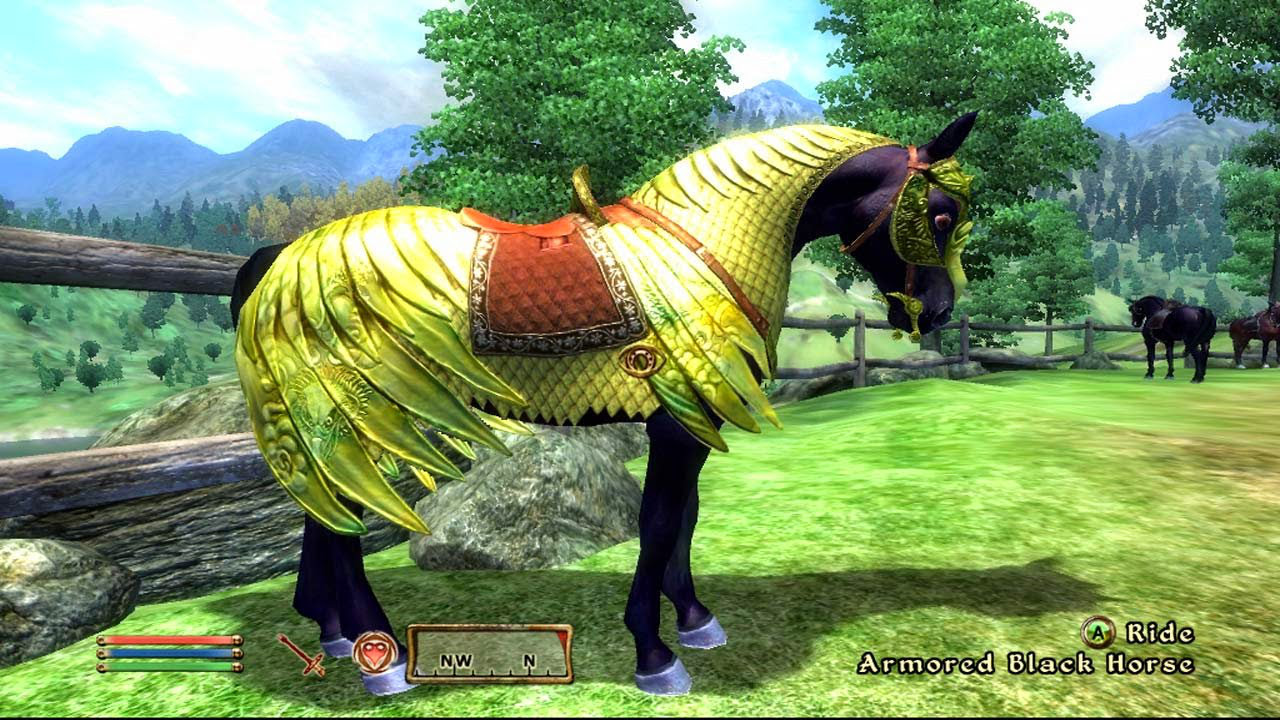
There were tons of editorials like this one from IGN, which somewhat accurately points to microtransactions and subscription-based behemoths like WoW as the future. True on both accounts. We laughed at Bethesda's $2.50 horse armor, but now we're relieved when microtransactions are purely cosmetic rather than exploitative; Fortnite makes its millions on $15 skins. WoW is still chugging along with its traditional subscription model, but games like Destiny 2 are constantly changing the shape of their monetization model to see what works. As long as we leave loot boxes behind, I'm happy.
I'm a big fan of this dour brand of premature PC gaming funeral bell. Here's a bit from a 2009 CinemaBlend article calling on PC gamers to accept the inevitable:
"As much as PC gamers would love to come to the defense of their beloved rigs, towers and skyscrapers with enough juice running through them to power a small city block, it’s time to concede to what many of us already knew: retail PC gaming is dying."
The same story cites the growth of digital sales, so it's a weird take even for the times. No need to retroactively flinch, though. I wouldn't be surprised if there's a defensive 'PC Gaming is fine' editorial hanging out somewhere in the PC Gamer mag archives. And if it exists, I'm sure it's airtight.
Now the moribund conversations have shifted to VR, an expensive platform for a niche audience with tech that, at times, feels too bulky and far-fetched to ever find safe footing. Sounds familiar. I look forward to the next decade of VR is dead/VR is alive editorials.
What genres were booming?
Everybody was making an MMO, or had already tried and failed. With retail sales of traditional PC games dying down, and microtransaction sales up, WoW was the golden goose of videogame profits.
The Matrix Online and Richard Garriot's Tabula Rasa saw their last days in 2009, while Myst Online ate it the year before. Big players like City of Heroes and Warhammer Online: Age of Reckoning would depart in the years following. It was and still is a cutthroat scene.
What games and genres were in their infancy?
The original Defense of the Ancients Warcraft 3 mod was killing it, one of the biggest free-to-play 'unofficial' games. I remember seeing it start as a palette cleanser between Quake matches at LAN parties, only to become the main event among my groups a few months in. The success of DotA caught the eye of the industry at large and birthed a new genre and, eventually, two of the biggest games in the world: Riot's League of Legends and Valve's Dota 2.
League of Legends was just coming onto the scene in 2009. I remember passing Riot's tiny booth at PAX 2009 and thinking it looked like garbage. Welp. It's the same year that developer of the original DotA mod IceFrog was also hired by Valve to work on Dota 2. Mobas were already huge, but they were about to get much, much bigger.
Elsewhere, off in a quiet corner of the internet, one of PC gaming's biggest seeds was planted. The earliest development build of Minecraft released on May 17, 2009.
How did we talk about games and play together?
Some might say the end of the '00s marked the The Death of LAN Parties, a tragic demise indeed. Here's an AnandTech forum thread lamenting poorly ventilated basements full of chunky CRTs and comradery.
With the advent of always-online DRM, the gradual proliferation of high speed internet, and console services like Xbox Live steering multiplayer gaming towards remote play, the culture and industry practices were bound to change. The writing was on the wall anyway; I knew LAN parties were going away when we heard that StarCraft 2 wouldn't support LAN connections at launch in 2010. I worked in a university IT office where LAN parties were a weekly, sometimes nightly norm, so the news hit hard.
Sure, it was possible to play together in the same room via Blizzard's servers, but it's the principle of the thing that mattered: PC gaming was supposed to be the malleable, open-ended platform, not an altar to corporate control. But we didn't wholly reject online multiplayer, we just wanted it all. PC gamers are picky bastards.
As for online gaming, there was a time before Discord. I know, it shouldn't feel like ages ago.
In 2009, online comms weren't so simple, except they were depending on who you asked. VoiP lived through Ventrilo and Teamspeak, barebones applications that required hosting servers locally. To connect and talk, you'd need to know each server's network information, plugging in network addresses and passwords rather than clicking on a server invite link.
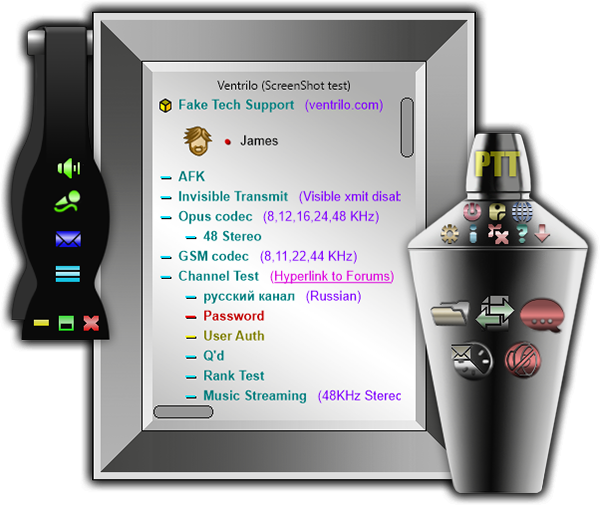
Ventrilo is still looking old as hell (I miss those ugly grey boxes) but Teamspeak's since gone the Discord route, at least visually. This all feels strange to write, as if I wasn't using these programs regularly a few years ago, now describing the act of hosting and connecting to private servers as some arcane process. Just another testament to how quickly PC gaming changes.
If we weren't talking to people while playing, we were dinking around at work and talking to internet strangers about gaming. For the better part of the '00s, Reddit wasn't the go-to for new gaming communities, aggregate news, or meme generation—Digg was all the rage, functioning a lot like Reddit does today, aggregating memes, news, and discussions based on user voting around specific interests, PC gaming included.
Reddit was mostly focused on tech news aggregation site until 2008, when it introduced subreddits. Hardware-heads hung out on Reddit before then, but it would be a few years before gaming culture at large truly wormed its way in, though Digg's botched V4 redesign scooted things along.
Aggregate site comment sections were still new blood and plenty of gaming forums still housed vibrant communities, just as many do today. NeoGAF was home to obsessive gaming discussions and breaking industry news while GameFAQs was and still is total anarchy.
What will PC gaming be like in 2029?
Will VR finally catch on? Are more launchers in our future? Now that Half-Life: Alyx is on the way, will we finally get word of Half-Life 3? What new genres will sprout up? How will new technology change the games we play? How much better can graphics and simulations actually get? Will Riot become the new Blizzard? How will the Steam and Epic Store showdown shake out?
Let us know what you think. As for us? Hard to say, but we'll be trying anyway. Stick around PC Gamer through December and into the new year while we continue to reflect on the last decade in PC gaming in order to make informed, perfectly accurate (don't quote me on this in 10 years) predictions about the next decade in this lovely hobby.
My bet? We'll play our PC games in flying cars and PCs will double as chocolate cake that you can eat and doesn't make you gain weight.
James is stuck in an endless loop, playing the Dark Souls games on repeat until Elden Ring and Silksong set him free. He's a truffle pig for indie horror and weird FPS games too, seeking out games that actively hurt to play. Otherwise he's wandering Austin, identifying mushrooms and doodling grackles.
